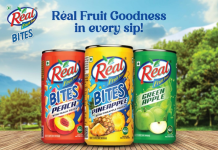
An ISO 9001:2000 certified company, 3D Packaging, is one of the leading tube manufacturers in India. In 2003, Vohra Packaging was acquired by 3D Packaging and was named 3D Technopack. It was the first company to launch a seamless plastic tube and oriented caps in India. “We have increased our capacity from 6 lakhs to 11 million tubes in a month to clients such as CavinKare, L’Oréal, Unilever, Himalaya and Dabur with three production areas dedicated to the extrusion, heading and printing department in offset, screen printing and hot stamping,” said Kumar Ashar, executive director, 3D Packaging.
A machine for manual screen printing was installed in the company in due time and enhanced production led to the creation of a semi-automatic machine with the aid of Technoshell Automation. 3D Technopak is now equipped with two screen printing machines, a flexo-screen hybrid machine (Isimat), three label lines, 12 injection moulding machines producing 37 caps of different shapes and sizes, three offset printers such as moss, Wifag-polytype machines, and technology in extrusion including heading and shouldering such as bayer and compression moulding. In 2011, the company installed a new Isimat flexo screen hybrid printing machine to compete in the European market.
“Isimat was chosen due to enhanced production and we preferred the after-sales service. Isimat supports us in technical services as well. We have not witnessed issues like breakdown, downtime, and post maintenance. We have had technical discussions, a few trials, and after being satisfied, we developed trust for the brand. Other companies were also available but we went with Isimat, “ Ashar added.
Earlier 3D Technopack did not have many jobs. Inspite of deficiency of funds, the company had developed capping machines and designed labelling machines with Technoshells. “As the extrusion machine provides a lower rate of production, we will install new extrusion and heading lines in the coming months. 3D Packaging provides multicolor, shrink sleeves on cap and hot foiling,” Ashar claimed. Adflex tubes, featuring very high softness and very low modulus is being produced in the plant. Different masterbatches are used to produce a complete range of tubes with metallic effects. Due to metallic inks the hot foil stamping process can be eliminated. The company has been able to produce tubes with 100 % polyethylene and HDPE material.
“In a move to strengthen our presence in tubes, three plants will be grouped together into one plant thus proving to be costeffective and enhancing the rate of production. We believe in quality and value addition rather than volume. We have put in a lot of efforts on design with the help of our production manager, in-house graphic team and operational head and give consistent feedback to our brand team. From artwork to the final output, our team has helped big to mid-sized companies,” concluded Ashar.










